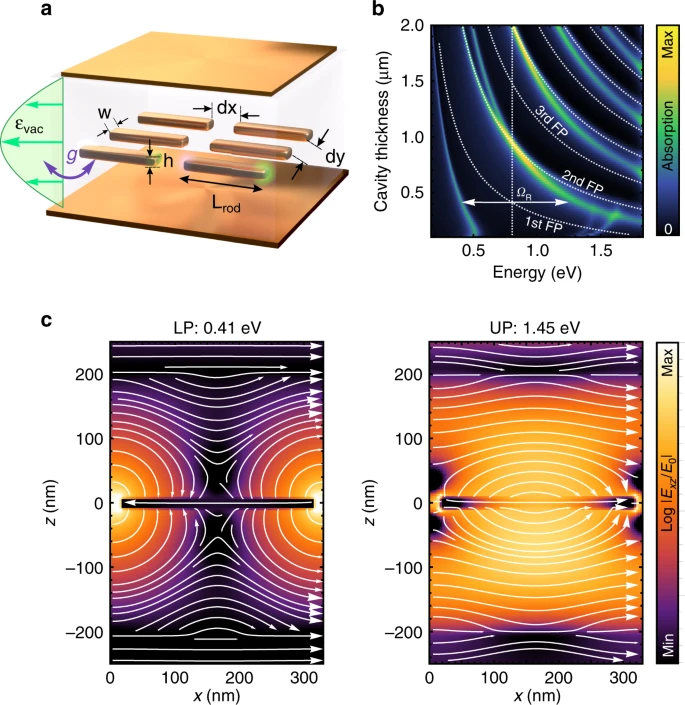EurekAlert September 23, 2020
Ultrastrong coupling is a distinct regime of electromagnetic interaction that enables a rich variety of intriguing physical phenomena. An international team of researchers (Sweden, Russia, Poland) used a plasmonic nanorod array positioned at the antinode of a resonant optical Fabry-Pérot microcavity to reach the ultrastrong coupling (USC) regime at ambient conditions and without the use of magnetic fields. From optical measurements they extracted the value of the interaction strength over the transition energy as high as g/ω ~ 0.55, deep in the USC regime, while the nanorod array occupies only ∼4% of the cavity volume. They indirectly observed up to ∼10% modification of the ground-state energy. The results suggest that plasmon-microcavity polaritons are a promising platform for room-temperature USC realizations in the optical and infrared ranges and may lead to the long-sought direct visualization of the vacuum energy modification. The discovery is of importance for fundamental research and might pave the way for advances in light sources, nanomachinery, and quantum technology…read more. Open Access TECHNICAL ARTICLE

Sketch and numerical modeling of the coupled system. Credit: Nature Communications volume 11, Article number: 2715 (2020)